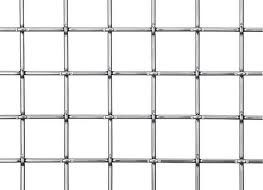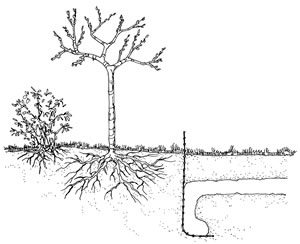Gopher Wire Installation Instructions
How to install gopher wire under sod and how to construct vertical gopher wire barriers

Gopher Wire Installation Instructions
We undoubtedly get a lot of questions about the proper way to install a gopher wire installation instructions. Unquestionably this is key to preventing gophers and moles from damaging lawns. It can be a very costly mistake if the gopher wire barrier is not installed properly. The cost of the installation is an investment. Add the extra cost of installing the wire, and the cost can be daunting. However, in areas of mole and gopher populations this step is worthwhile, if done right.
The Quality of Wire Matters


Previously, I have seen many installations where the wire used was aviary wire, like chicken wire but with half inch diagonal mesh instead of one inch. This kind of wire was not meant to be buried and will fail in a short period of time. Our stainless steel gopher wire is 18 gauge, 3/4 inch square welded mesh.There are other options on the market, but this is the best and longest lasting.
Important Tip:
If the sod is installed directly on top of the wire gophers will go under it and pull the grass down through the wire and moles will push piles of soil up through it defeating the purpose of the extra expense. Proper placement is to install the wire and then cover it with one to two inches of soil and then lay the sod on that. If you exceed one to two inches then gophers and moles will just tunnel in between the sod and wire.
Contractors sometimes try to talk you out of this extra step but be firm, this is the step that makes the extra expense work.
I like to see gopher wire laid so that the leading edge of the wire or the part the is shingled under the next is toward the invading gopher or mole.
This usually means that if the lawn is next to the house, the second row of gopher wire goes under the first and so on. Just think of the animal tunneling under the wire. You want the seams to be layered so that if there is a small opening it is away from the direction of the tunnel.
Holding it down

Sod pins
The gopher wire is held in place with sod pins or landscape staples. Conversely, nylon zip ties or hog rings can also be used to secure wire seams. Place the staples about 2 to 3 feet apart. Again, be very careful to have tight overlaps of 4-6 inches without buckling or openings.
Gopher Wire Installations ~ 2 examples
Another approach is to just build up borders and add a soil buffer and gopher wire mesh right on top of an existing damaged lawn
Vertical Gopher Wire Barrier Fences
At this time more and more customers are installing vertical gopher wire barriers. A vertical barrier will enclose and protect a garden area. Additionally it can be used to fence a wild area and home area.
Firstly, I recommend a trench 2-3 foot deep and install the wire with a ninety degree bend to the outside. Secondly, leave at least six inches of gopher wire fence above ground because gophers also invade from the surface. And lastly, attach the gopher wire above ground to a fence or border.

Gopher Wire Installation ~ What Customers Say




